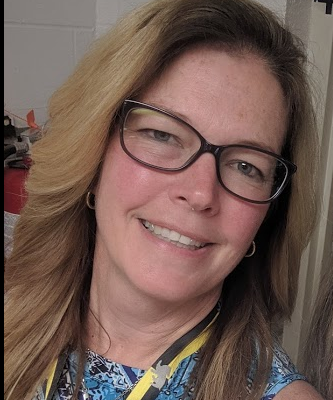“Educational change is not constrained by lack of technology but a lack of sociological imagination.” Diana Rhoten
As a new school year begins, and our high school library undergoes a radical transformation in which outdated books are stripped from shelves and digital workstations are added, I find myself pausing to reconsider the role of technology in education, and how it might allow us to re-imagine and re-invent our current education system.
Truth be told, I’ve never been a “gadgets” kind of girl. Prior to day one of a Summer Himalayan trek with students from my Sharon district, I chose to leave the trekking poles behind. I wanted my hands free and unencumbered by the weight of extra objects so that I could more fully focus on the beauty of the surrounding mountains.
However, unbeknownst to me, the highest passes were snow covered due to atypical weather patterns in the Hampta Pass region. This made for slippery slopes. I needed to re-think my plan. I grabbed hold of the hand of one of the local Indian guides, who spoke little English but understood well enough the distressed look on my face and smiled back to reassure me that his hand would be there throughout the duration of that challenging journey.
At a certain moment near the highest point of our trek, I lost my grip on his hand due to gravity, fell on my posterior and slid many feet down the mountain, luckily wounding only my pride. As I looked up toward my guide’s surprised face, and we both laughed with relief at the realization that I was o.k., I felt a profound sense of gratitude for my new friend and his concern for my well being. A trekking pole is no replacement for the touch of a human hand.
These days, it is all too easy to be side swiped by the appeal of an ever-increasing array of educational gadgets, without giving thorough and deep consideration to their place in the overall scheme of things.
Technology is defined as “the use of science to invent things or solve problems,” and/or “the application of scientific knowledge for practical purposes.”
As educators, how can we utilize technology to assist us in creating connections for young people, sparking their imagination, enabling collaboration, deep inquiry and practical problem-solving that relates to wider social, political and global concerns?
How can technology assist us as educators in helping our students navigate the slippery slopes beyond strictly fact-based learning toward enhanced critical thinking skills? These are questions worth pondering at the start of this new school year.
About the Author: Ms. Collins has worked as a Media Specialist/Librarian for 14 years in locales ranging from California to Kathmandu, Nepal. She currently works as Librarian/Media Specialist at Sharon High School in Sharon, Massachusetts. She serves on the Executive Boards of both the Massachusetts Library System and MassCUE (Massachusetts Computer Using Educators). She earned National Board Certification as a Library/Media Teacher in 2009 and is the 2014 recipient of the AASL Intellectual Freedom Award. Her writing contributions include a chapter featured in the recently published ISTE book, “Literacy in the Digital Age,” Library Media Connection (“Survival Tactics for the Warrior Librarian,”) NEA and other education-related blog posts and journals. She served as a project consultant for the learning layer of the multi-media e-book, “Searchlights and Sunglasses: Field Notes from the Digital Age of Journalism.”
 Print this post
Print this post



